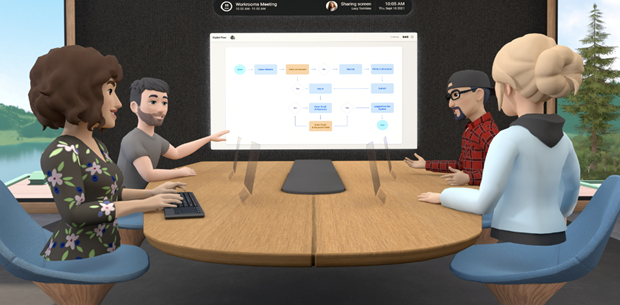How much technology has changed over the course of your life? A lot.
The changes made to the internet and technology in the past years have gone beyond fun and function like Zoom and TikTok. Some innovations could transform the way we interact with others and our world.
The metaverse is a good example.
It’s fine if you only know of the metaverse in relation to Facebook’s recent change to Meta. It is still an abstract concept.
It is becoming a reality.
The metaverse is affecting workplaces in a number of ways, with a lot of media attention. Companies should consider how they might adapt to the metaverse. How will this affect core human elements such as business and work?
What is the Metaverse?
A single, unifying metaverse isn’t real. At least not yet. Although it is a concept, it is not new. Neal Stephensen, an author, coined the term “metaverse” in 1992’s science fiction book “Snow Crash.”
The metaverse is the conceptualization of the next wave on the internet. It is characterized by a virtual environment that allows digital avatars to interact in real time.
Here are some examples of technology that is part of the metaverse.
- VR, AR Goggles:VR refers to a virtual world that is 100% real. AR is subtler. AR glasses allow you to view the menu at a restaurant, and even see images or videos.
- Virtual worlds:Digital avatars are able to live, work and socialize in a virtual 3D environment. It’s like playing The Sims with real-life tasks and other events.
- Cryptocurrency Since the metaverse is virtualized, crypto will be used as the main currency.
The metaverse can be compared to a video game: A player (a real person), has an avatar (a virtual person) that allows him/her to interact in a virtual environment. This includes buying things, playing games, and completing tasks.
The Metaverse: Working in it
The metaverse has many uses. Here’s an example of what a day in the metaverse might look like.
- Participate in a VR headset-based mixed reality work session.
- Enjoy a Blockchain-based game.
- Manage your cryptocurrency financial portfolio.
The biggest change will be likely to come from working in the metaverse. Mark Zuckerburg presented Facebook’s vision for virtual workplaces . This is appealing to many who are now working from home because of the pandemic.
Here are some ways the metaverse could impact workplaces.
- Virtual workplaces – Digital avatars can interact to replicate real-life workplace interactions.
- 3D spaces Designers and engineers can create 3D models digitally without the need for physical prototypes.
- Client meetings in mixed reality (MX). A client can use VR Goggles to test a new product, while conversing with a sales representative on the phone.
How businesses should respond to the Metaverse
WFP’s role in the pandemic led to the development of new technology that can replace traditional offices. Virtual spaces will be increasingly integrated into businesses to allow employees to work in the metaverse.
Technology can’t replace the human element .
People are searching for connections after the COVID-19 epidemic. After so many years apart, people are keen to connect and find their community.
Signature Workspace is a big advocate for coworking in a community. We believe that coworking spaces are vital for professionals in any field.
People seek out coworking space because they want to connect and be part of a community. We have previously written about how the human factor is your true competitive edge and why it’s so important to prioritize.
Technology can facilitate connection and community. It all depends on how you use it.
As people begin to work in the metaverse, businesses need to keep their eyes on the human connection. It’s the heart of every business and organization that succeeds.
This post was written by Tara Kintz. Tara is a director at Signature Workspace which is a Virtual Office Tampa. Signature Workspace, owned and operated by Cantor Fund Management, offers services and amenities such as private offices, flex space, co-working space, virtual offices, meeting/conference rooms, and more.









